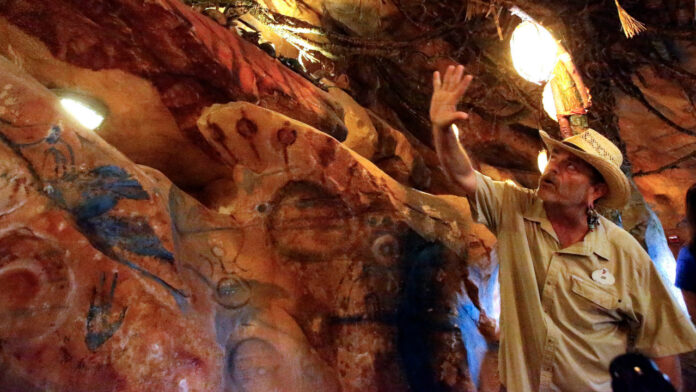
By: Robert Niles
Publisher: The OCR
Date: November 24th 2017
Are theme parks art?
I suspect that many of you might laugh at that question. Disneyland is fun, so it can’t be art, right? Isn’t art supposed to be serious?
While I suspect that many people might think that, I hope that you do not. Because dismissing the possibility that something like Disneyland or Universal Studios Hollywood could be art isn’t just bad for theme parks – it’s bad for the cause of art.
Disney Imagineer Joe Rohde raised the topic of the artistry of theme parks during the Legends panel at last week’s International Association of Amusement Parks and Attractions Expo in Orlando. Rohde, who most recently led the creative teams for Guardians of the Galaxy: Mission Breakout! at Disney California Adventure and Pandora: The World of Avatar at Disney’s Animal Kingdom in Florida, was joined on the panel by fellow Imagineer Scott Trowbridge, who is overseeing the design of Star Wars: Galaxy’s Edge and Universal Creative’s Thierry Coup, who led the development of The Wizarding World of Harry Potter, Transformers: The Ride 3D and Universal’s The Amazing Adventures of Spider-Man.
The three offered a master class in the use of outside intellectual property to create world-class theme park attractions that make people feel like they’ve become characters in their favorite entertainment franchises. But that’s “entertainment” – not art.
Or is it? To me, art is a creative work that has passed the testS of time and thought. If a creative work inspires you to think about life – and continues to do so for years after you first experienced it – well, I think that’s as good a definition of art as anything.
It doesn’t have to be serious. And it definitely shouldn’t be impenetrable. Art should open thought and discussion, not shut them down. Art can be fun. It can entertain as it inspires. Declaring otherwise only serves to divide people from art, casting it as some sort of cultural medicine instead of a joy in life. Promoting art as serious, expensive and difficult to understand only serves to marginalize a vital resource that could provide inspiration for everyone. Excellence isn’t achieved through elitism.
But what about those tests of time and thought? Can a theme park attraction pass those? In a four-minute sermon near the end of the panel, Rohde laid out the road map for doing that.
“I believe that (theme parks are) an art form, and that as art form it is connected to a traceable, describable pedigree of behavior that goes back hundreds of years and is study-able and that you can learn from,” he said.
“We live in a time when there is a Copernican revolution taking place in our understanding of our brains and our evolution,” Rohde said. He urged designers to study the science of human response to design, to learn how to create attractions that would pass the test of time.
“If something works, it doesn’t work by magic, it works for reasons,” he said. “And if you know those reasons, you can make things work.”
The barrier to art shouldn’t be built in front of the audience. It stands instead in front of art’s creators. Making art is hard and demands the study and discipline that Rohde and his fellow panelists described.
But those whose work brings people to cry in joy, anguish or exhilaration, to ache and to provoke, and to feel profound connectedness to family and strangers, deserve credit for passing the tests that define art. Theme park designers included.
Are theme parks art?
Source: https://www.ocregister.com/2017/11/24/515680/
Comment: This article aims to justify and explain how theme parks are able to break through as an art form. I find myself resting in the camp that believes theme parks to be a legitimate form of art while also being a fun place to spend time. Many exhibits and pieces that folks would consider legitimate art have similar characteristics to something like a theme park. For example, exhibits that rely on experiential qualities are considered art. Take Otherworlds as an exhibit that relies on this. Theme parks have a similar reliance on experiential qualities as an art form. Further theme parks tell stories. Certainly no one would argue that fictional literature isn’t a form of art. Stories are designed to engross and fascinate us. Whether that story comes from a book, movie, or even a theme park it is all art. Theme parks could even fall into their own category of art somewhere in the realm of experiential storytelling. I will admit though, some parks such as six flags fail in comparison to Universal or Disney to create the same level of artistic experience and are much more of an entertainment form rather than art form.



